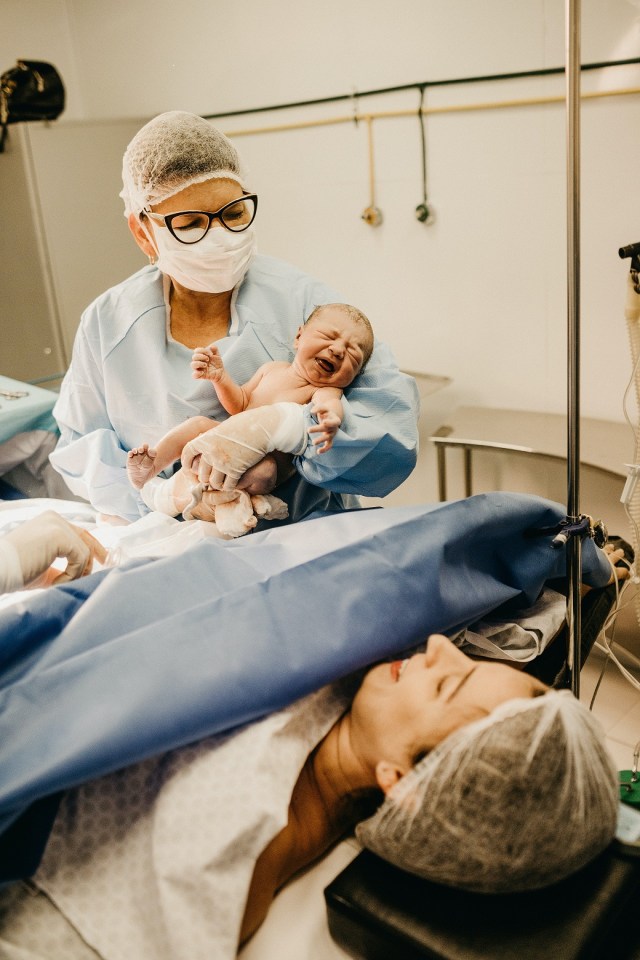
During my OB/GYN residency back in 1975, we were taught that home births with midwives were bad and hospital births with a physician were good. But I have learned over the last 46 years that hospital births are not necessarily safe or good, and that home births are not necessarily risky or bad. What matters is who does the delivery, where will the delivery be done, and how will the delivery be done.
If you are wondering which may be right for you, consider these questions.
1. Would you be more comfortable at home or in the hospital? Did you know that anxiety can interfere with labor? Consider whether you would be more comfortable delivering at home or in a hospital. It is not uncommon for labor to stop for a while when women check into a hospital for a delivery. If labor stops for any length of time, your obstetrician may want to begin induction processes to speed things up because of the 24-hour membrane rupture rule and to appease the payers. I have always tried to manage patient anxiety by promoting confidence and comfort in my patients, giving them the same autonomy and respect they would have at home within the safety of the hospital.
2. Do you want to make decisions or have input about delivery? The big problem with hospital births is the loss of autonomy, which starts with your insurance company telling you which doctor you may see and which hospital you may go to. Furthermore, you will get a predefined number of visits and tests, with insurance companies continually trying to cut costs by decreasing the number of paid-for visits. Many insurance companies do not cover the services of midwives, but midwives generally see their patients more often than most obstetricians, at least with low-risk pregnancies. Joy Huff, who survived a blood infection in 2013, told NPR that “My best advice for getting a professional to listen is to keep searching for one that is willing to listen. … I was not aware of my right to change providers until it was too late.”
3. Are you comfortable with medical interventions? If you want a delivery with the least amount of technological intervention, you will probably need to work with a midwife and have a home birth. Many people feel that birth is a natural process and should be allowed to progress without a lot of technological intervention. In a hospital, even with a “natural” delivery, you will probably have an IV, monitors, a blood pressure machine, and a Foley catheter.
Walking is good for natural labor, but in a hospital hooked up to numerous pieces of electronic equipment, this is difficult. On the other hand, some mothers like the idea of having an obstetrician decide on an induction delivery date.
Additionally, midwives do not do C-sections but you should ask how many patients a midwife has sent to the hospital for complications which resulted in a C-section. Besides asking your obstetrician what their C-section rate is, you should also find out how high the C-section rate is for the hospital. If you opt for a hospital delivery, you want a hospital and an obstetrician with a low C-section rate.
5. What is the Infant or maternal deaths for your doctor/hospital/midwife? Ask your doctor about their infant and maternal mortality rates. Also ask how many C-hysterectomies they have had to perform to stop a post-partum hemorrhage. Ask your midwife about infant and maternal mortality rates too. Just be aware that when midwives send patients to the hospital because of complications, whatever bad outcomes emerge will be assigned to either the doctor or the midwife, and there is no consistency in how this is done. It sometimes happens that when a midwife sends a patient to a hospital because of complications, any infant or maternal death in the hospital can be attributed to the midwife instead of the hospital obstetrician. These numbers are not always reliable.
6. Are you low risk and live close to a hospital? The issue between a hospital and home birth is really that the hospital is a safer place in case of an obstetrical emergency such as hemorrhage. Dr. Neda Ghaffari specializes in high-risk pregnancies. She will tell you, though, that “It’s very hard to determine which patients are going to have an obstetric emergency.” Dr. Ghaffari recommends that if a woman with a low-risk pregnancy chooses a home birth that she lives within 15 minutes of a hospital. If she has had a previous C-section, is carrying twins, or has a breech baby, she should opt for a hospital birth.
7. What is your blood type? Recent studies show that those with the O blood type may have some additional protection against COVID-19, so those with this blood type may be safer making the choice to deliver in a hospital during this pandemic if that is their preference.
From my perspective, we need to combine the concept of the hospital and home birth. We should create specialty birthing hospitals so there is the hospital safety net, with nurses, doctors, and an operating room combined with the autonomy, comfort, voluntariness, and respect that mothers would get with a midwife at a home birth. Ideally, the labor, delivery, recovery, and post-partum should actually be like home, not just give the appearance of a home with pretty drapes and wall coverings. By doing so, we could make the choice of birthing location easier for mothers on both sides of the home vs. hospital conversation.











